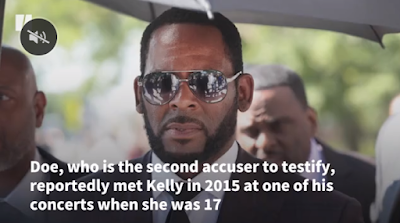Jan. 6 investigators seek preservation of phone records
The panel probing the Capitol riot didn't identify the names of the people whose communications it's seeking, but the list could include fellow lawmakers.
U.S. announces end of 20-year mission in Afghanistan
The last C-17 departed from Hamid Karzai International Airport on Monday, said Gen. Frank McKenzie, commander of U.S. Central Command.
AOC, Tlaib, Pressley call on Biden to dump Powell as Fed chair
They said they want to see someone at the helm who is more aggressive on financial regulation and climate change.
Trump to head to Iowa with an eye on 2024
The former president plans to hold a rally in the state as he continues to tease a third run for the White House.
Interior denies request for new Alaska refuge survey
AIDEA had hoped to move forward with fieldwork for seismic data acquisition, a key step in determining the area’s oil and gas resource potential.
HHS unveils office to treat climate change as a health issue
“The climate crisis is here, and the Department of Health and Human Services is rising to meet the challenge,” HHS Secretary Xavier Becerra said.
House set to tear up Biden's Pentagon budget plans
Republicans, and even some Democrats, are planning to boost funding levels.
Education Department to probe 5 states with ‘unacceptable’ school mask bans
The department's civil rights office will examine whether bans in Iowa, Oklahoma, South Carolina, Tennessee and Utah violate the rights of students with disabilities.
Evictions to hit 750,000 households, Goldman says
The findings that Goldman released mark one of the first comprehensive estimates of what could happen in the absence of the eviction moratorium.
States press forward on vax passports without Biden’s guidance
Experts fear the market for fake cards will grow as more workplaces and public venues require proof of vaccination.
Swing voters, Week 3: What is this election about?
Campaigns are all-consuming for pundits, partisans and journalists, but decidedly less so for most everyone else — even in a race that is tightening significantly.
Evacuations slow as U.S. shifts focus to military withdrawal in Afghanistan
The Taliban have tightened their security cordons around the airport, making it more difficult for people to make it to the gates.
Hurricane Ida traps Louisianans, leaves the grid a shambles
It was one of the most powerful hurricanes ever to hit the U.S. mainland.
Pentagon prepared for ‘mass casualty’ attack at Kabul Airport hours before explosion
Detailed notes of three classified calls provided to POLITICO show top Pentagon officials knew of imminent threat, but struggled to close Abbey Gate.
The first national cyber director has big plans to toughen U.S. digital defenses
In a wide-ranging interview, Chris Inglis explained how he’s using his new White House office to better synchronize the government’s fight against hackers.
Dems dig in on debt as painful September looms
The majority party still plans to burn its most expedient ticket out of the fiscal mess.
As Biden ends mission in Afghanistan, a refugee backlash looms at home
The White House is trying to work quickly to stave off criticism from more state and local officials over the resettlement of Afghan refugees.
Biden pays respects to U.S. troops killed in Afghanistan
First lady Jill Biden joined the president at Dover Air Force Base to grieve with loved ones.
Louisiana governor: Levees should hold against Hurricane Ida
“We feel very good about what is inside the hurricane risk reduction system,” John Bel Edwards said.
Fauci ‘sticking with’ Covid-19 booster shot recommendations
But he said the administration would remain flexible based on the data as it comes in.
McConnell: ‘Why we went’ to Afghanistan has been lost
He said maintaining American forces in Afghanistan had kept the lid on terrorism.
U.S. airstrike hits suicide bomber, as officials warn of ‘exceedingly dangerous moment’ in Afghanistan
The attack was carried out on the same day President Joe Biden took part in the dignified transfer of service members killed outside the Kabul airport.
Romney blames both Biden and Trump for crisis in Afghanistan
He also said the removal of U.S. troops from Afghanistan is not the same thing as ending the war.
Sullivan, Blinken warn of ‘exceedingly dangerous moment’ in Afghanistan
“We are in a period of serious danger given what we are seeing in the intelligence,” Jake Sullivan said.
Blinken said U.S. expects Taliban won’t seal off country after Aug. 31
He said the international community expects that travel in and out of Afghanistan will not end.
Slain Marine who cradled baby at Kabul airport loved her job
Here are the stories of the American troops killed in last week’s suicide bombing.
A program that pays farmers not to farm isn't saving the planet
A decades-old program that pays farmers to leave land fallow is being heralded by the Biden administration as a climate solution, but environmentalists don’t see it that way.
Meth, Vanilla and ‘Gulags’: How China Has Overtaken the South Pacific One Island at a Time
What’s happening in Tonga is a microcosm of China’s expanding global influence and why the United States is losing ground fast.
Breakthrough mayor’s race creates tough choice for Boston
The deep well of experienced, non-white candidates is widely cheered within the city’s Democratic apparatus. But the same milestone is proving challenging to navigate.
Hurricane Ida lashes Louisiana, knocks out New Orleans power
Ida’s landfall came on the same date Hurricane Katrina ravaged Louisiana and Mississippi 16 years earlier.
6 of RFK’s children ‘devastated’ by vote to release assassin
“We are devastated that the man who murdered our father has been recommended for parole,” they wrote in a statement issued Friday.
‘Guidance is to just do it:’ Biden greenlights more strikes on ISIS-K
"We will continue to hunt down any person involved in that heinous attack," the president said Saturday, noting "extremely dangerous" conditions persist amid Afghan drawdown.
The Shows: Sunday listings for Aug. 29, 2021
Guest listings for Sunday’s shows.
‘Nobody is this incompetent’: Rental aid slowdown puts target on governors, mayors
The fight over renter protections is now largely a state and local problem after Thursday’s Supreme Court decision to halt the federal eviction ban.
Opinion | MLK Warned Us About Moderates. Are We Listening?
The anniversary of the 1963 March on Washington should be an occasion for escalating the non-violent fight for voting rights.
Taxing companies' overseas profits could be the next rift among Democrats
A significant number of Democratic lawmakers are concerned that proposals by the White House and others to beef up a minimum tax on big companies go too far and will put American firms at a competitive disadvantage.
The Old Cliché About Afghanistan That Won’t Die
‘Graveyard of Empires’ is an old epitaph that doesn’t reflect historical reality — or the real victims of foreign invasions over the centuries.
U.S. airstrike targets Islamic State members in Afghanistan
The airstrike was launched from beyond Afghanistan less than 48 hours after the devastating Kabul attack that killed 13 Americans and scores of Afghans.
Hurricane Ida strengthens, Louisiana braces for severe blow
The storm is expected to make landfall on the exact date Hurricane Katrina devastated a large swath of the Gulf Coast 16 years earlier.
Opinion | What ISIS-K Means for Afghanistan
The hard-to-kill insurgency behind the bombing poses a huge challenge for the Taliban—and a puzzle for American efforts to keep the country stable.
Covid-19 origins still murky after Biden administration's 90-day investigation
Biden said the efforts to determine the root cause of the pandemic “will not rest.”
Democrats rush to avert eviction calamity after ban is blocked
Eviction ban advocates in Congress would likely face insurmountable hurdles if they tried to revive the moratorium.
Jan. 6 investigators demand records from social media companies
Many defendants charged in the insurrection planned and coordinated their actions on the platforms.
Marine officer relieved of duty after calling out senior leaders about Afghanistan
"I am willing to throw it all away to say to my senior leaders, ‘I demand accountability,'" Lt. Col. Stuart Scheller said in a video message.
Florida judge rules against DeSantis in school mask fight
The decision is a win for parents who fought back against the Republican governor over his hands-off Covid-19 policies.
Powell walks high wire as Fed plans to ease support for Biden's economy
Central bank chief seeks to avoid market turmoil as president weighs tapping him for a second term.
RFK assassin Sirhan wins parole with support of 2 Kennedys
The decision was a major victory for the 77-year-old prisoner, though it does not assure his release.
Stephen Breyer says he's still mulling retirement
"I don’t think I’m going to stay there till I die — hope not," he told The New York Times.
How Kamala Harris is embracing — and changing — the system
This episode of Playbook Deep Dive examines Kamala Harris’ law school years, her performance as Veep and leadership as a woman of color — and why she’s still embracing “the system.”
‘It Nearly Killed Me’: Michael Caputo’s Life After Years Fighting for Trump
After a public meltdown and cancer, Michael Caputo is reexamining his career as a smashmouth politician.




























